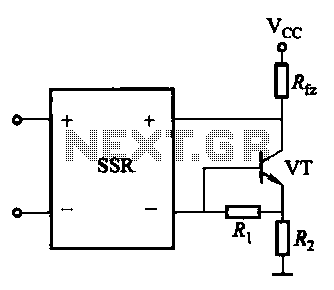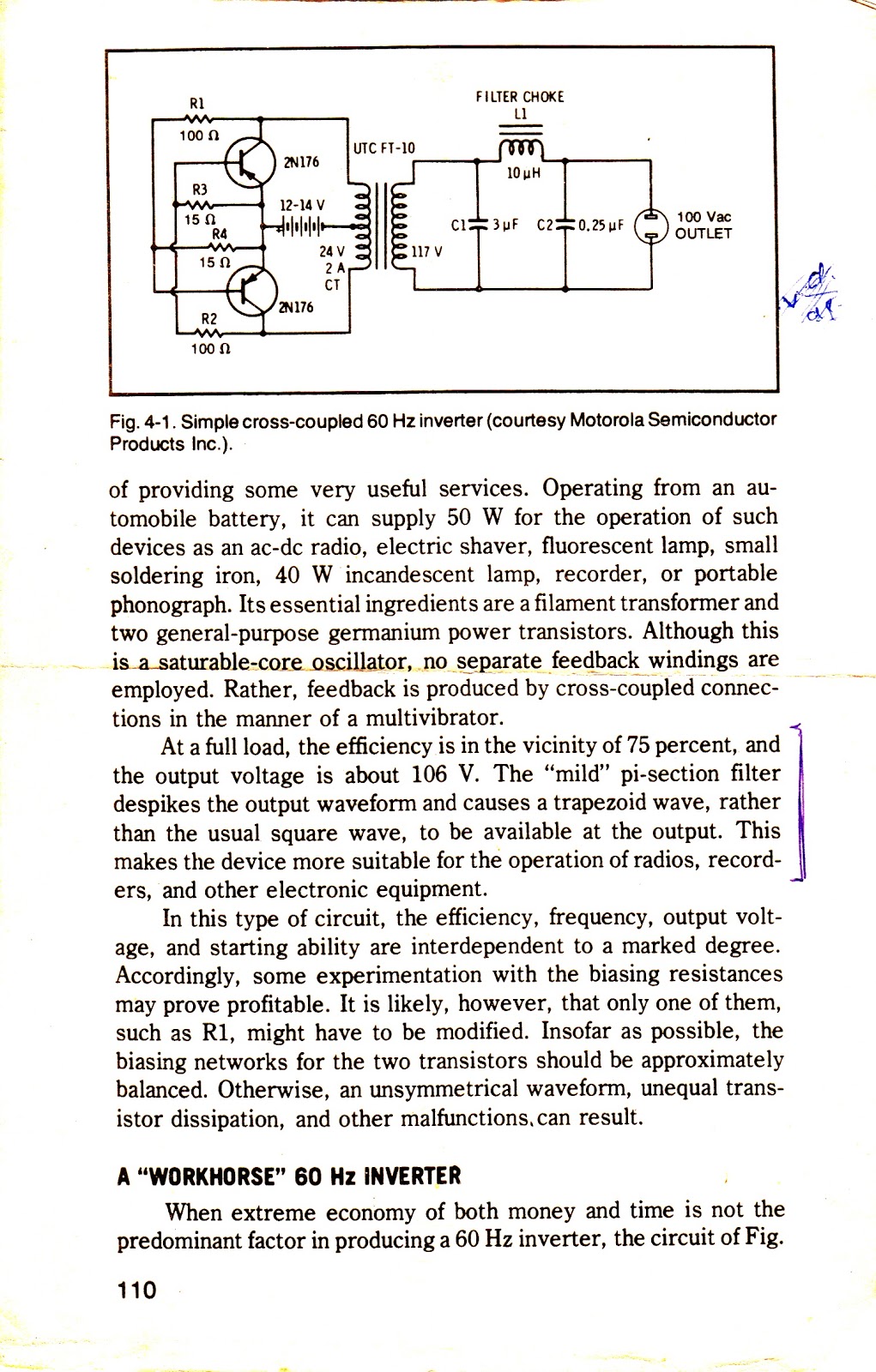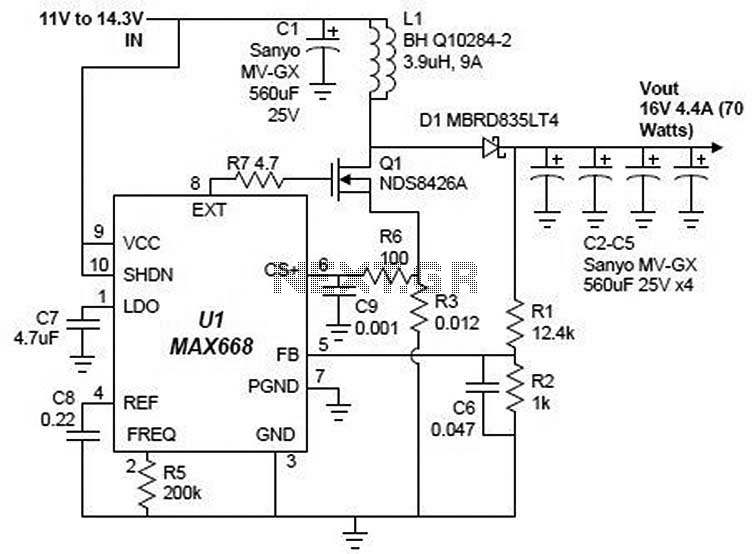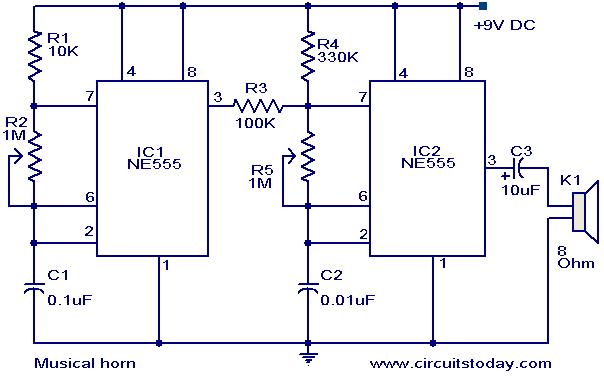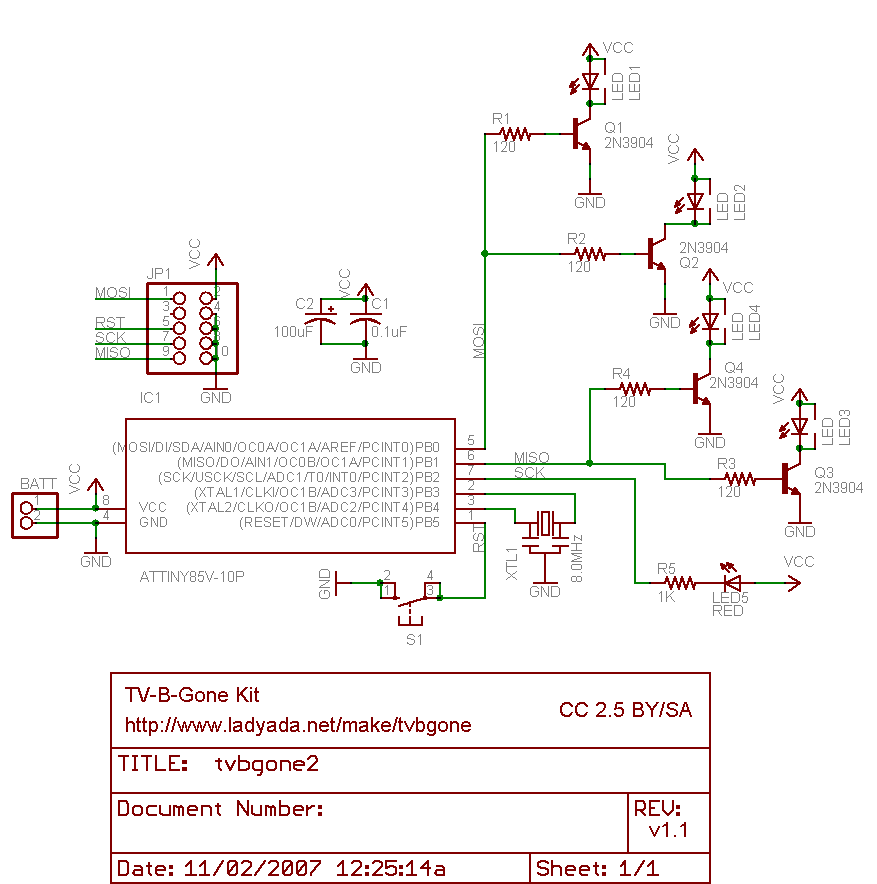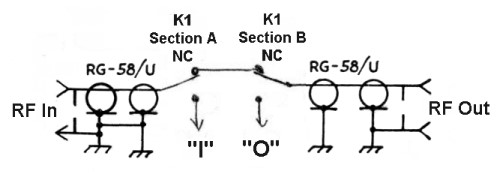
6V6 6J5 Class A Vacuum Tube (Valve) Amplifier Circuit

This is a successful vacuum tube project featuring a small amplifier where a 6V6GT output pentode is connected in triode mode, producing an output of approximately 4.5 watts. The project includes a single-ended audio amplifier with a resistive input network, a driver stage, and an output stage designed for an 8-ohm loudspeaker load, utilizing minimal passive components for biasing and coupling. The power supply voltage is derived from full-wave diode rectification of 230 VAC through a magnetic transformer, resulting in a quality audio amplifier. A key design consideration for the single-ended output stage is the matching of the output tube with an appropriate output transformer (OT) to ensure proper impedance matching. Under typical operating conditions, the 6V6 power tube, operating in triode mode, has an ideal load impedance of 5k ohms and generates around 4.5 watts of power. An OT rated for 8 watts is used, providing impedance matching from a 5k primary to an 8-ohm secondary, suitable for common loudspeaker applications. The amplifier employs a simple linear power supply to generate 300 VDC, with heater voltages sourced directly from the 6.3 VAC taps on the secondary of the power transformer. The remaining secondary windings, rated at 230 VAC, are utilized for the DC supply, which includes four rectifiers, various smoothing capacitors, and resistors. Several construction challenges were addressed during the assembly of this amplifier, including high power supply voltages, large and potentially leaky inductive components, and elevated temperatures. An old tube amplifier chassis was repurposed for this project. Magnetic flux is expelled from the transformers, as indicated by the red arrows. To minimize induction noise from the power transformer (PT) to the output transformer (OT), the two transformers are positioned at opposite ends of the chassis and their axes are rotated 90 degrees relative to each other. While this configuration directs flux from the OT towards the 6V6, it prevents interference of OT flux into the sensitive preamp stage tube. Additionally, hum reduction is enhanced beneath the chassis by twisting all pairs of wires carrying AC, including filament heater wires and the PT primary and secondary wiring leading to the diode rectifier.
The amplifier design showcases a classic approach to audio amplification using vacuum tubes, emphasizing the importance of component selection and layout in minimizing noise and maximizing performance. The choice of the 6V6GT tube highlights its versatility and suitability for audio applications, especially when configured in triode mode to achieve desirable linearity and sound quality. The output transformer’s specification is critical, as it not only facilitates impedance matching but also influences the overall tonal characteristics of the amplifier. The full-wave rectification process employed ensures a stable DC supply, while the linear power supply design contributes to low noise levels, essential for high-fidelity audio reproduction.
In terms of construction, careful attention to the layout and orientation of transformers and wiring is essential to mitigate electromagnetic interference. The strategic placement of the OT and PT, along with the use of twisted pairs for AC wiring, further enhances the amplifier's performance by reducing hum and noise. Overall, this project exemplifies the principles of vacuum tube amplifier design, combining traditional techniques with practical considerations for modern audio applications.This is my first successful vacuum tube project. The output of this small amplifier in which a 6V6GT output pentode is connected as triode is about 4. 5 watts. This project involves a single ended audio amplifier, which consists of a resistive input network, a driver stage, and an output stage to a typical 8 ohm loudspeaker load, all the while, us
ing a minimum of supportive passive components for biasing and coupling duties. Power-supply voltage is provided by full wave diode rectification of 230 VAC by a magnetic transformer. This design provides a quality audio amplifier. The major factor involving the design of this single ended output stage is matching an available output tube to an available output transformer (OT), which can provide the proper impedance matching.
Using typical operating parameters, the 6V6 power tube, operating in triode mode, has an ideal load impedance of 5k Ohm, and generates about 4. 5 watts of power. An OT was used, handling 8 watts and providing impedance matching from a 5k primary to an 8 ohm secondary, which is a common loudspeaker impedance.
The amplifier uses a simple linear power supply to develop 300VDC. Heater voltages are supplied directly from the 6. 3VAC taps on the secondary of the power transformer. The other secondary windings, rated at 230VAC are used for the DC supply. It consists of a 4 rectifiers, variety of smoothing capacitors and resistor. Several construction issues were considered in the building of this amplifier. High power supply voltages, large and leaky inductive components, and high temperatures are among these considerations. I used old tube amplifier chassis. Magnetic flux is expelled from the transformers as shown by the red arrows above. By placing the output transformer (OT) and power transformer (PT) at opposite ends of the chassis, and rotating their axes 90 ° from one another, induction noise from PT to OT is reduced.
Although this configuration sees flux from the OT directed at the 6V6, OT flux interference into the sensitive preamp stage tube is avoided. Beneath the chassis hum reduction is further achieved by winding all pairs of wire containing AC (filament heater wires, PT primary, and secondary wiring to the diode rectifier).
🔗 External reference
The amplifier design showcases a classic approach to audio amplification using vacuum tubes, emphasizing the importance of component selection and layout in minimizing noise and maximizing performance. The choice of the 6V6GT tube highlights its versatility and suitability for audio applications, especially when configured in triode mode to achieve desirable linearity and sound quality. The output transformer’s specification is critical, as it not only facilitates impedance matching but also influences the overall tonal characteristics of the amplifier. The full-wave rectification process employed ensures a stable DC supply, while the linear power supply design contributes to low noise levels, essential for high-fidelity audio reproduction.
In terms of construction, careful attention to the layout and orientation of transformers and wiring is essential to mitigate electromagnetic interference. The strategic placement of the OT and PT, along with the use of twisted pairs for AC wiring, further enhances the amplifier's performance by reducing hum and noise. Overall, this project exemplifies the principles of vacuum tube amplifier design, combining traditional techniques with practical considerations for modern audio applications.This is my first successful vacuum tube project. The output of this small amplifier in which a 6V6GT output pentode is connected as triode is about 4. 5 watts. This project involves a single ended audio amplifier, which consists of a resistive input network, a driver stage, and an output stage to a typical 8 ohm loudspeaker load, all the while, us
ing a minimum of supportive passive components for biasing and coupling duties. Power-supply voltage is provided by full wave diode rectification of 230 VAC by a magnetic transformer. This design provides a quality audio amplifier. The major factor involving the design of this single ended output stage is matching an available output tube to an available output transformer (OT), which can provide the proper impedance matching.
Using typical operating parameters, the 6V6 power tube, operating in triode mode, has an ideal load impedance of 5k Ohm, and generates about 4. 5 watts of power. An OT was used, handling 8 watts and providing impedance matching from a 5k primary to an 8 ohm secondary, which is a common loudspeaker impedance.
The amplifier uses a simple linear power supply to develop 300VDC. Heater voltages are supplied directly from the 6. 3VAC taps on the secondary of the power transformer. The other secondary windings, rated at 230VAC are used for the DC supply. It consists of a 4 rectifiers, variety of smoothing capacitors and resistor. Several construction issues were considered in the building of this amplifier. High power supply voltages, large and leaky inductive components, and high temperatures are among these considerations. I used old tube amplifier chassis. Magnetic flux is expelled from the transformers as shown by the red arrows above. By placing the output transformer (OT) and power transformer (PT) at opposite ends of the chassis, and rotating their axes 90 ° from one another, induction noise from PT to OT is reduced.
Although this configuration sees flux from the OT directed at the 6V6, OT flux interference into the sensitive preamp stage tube is avoided. Beneath the chassis hum reduction is further achieved by winding all pairs of wire containing AC (filament heater wires, PT primary, and secondary wiring to the diode rectifier).
🔗 External reference
